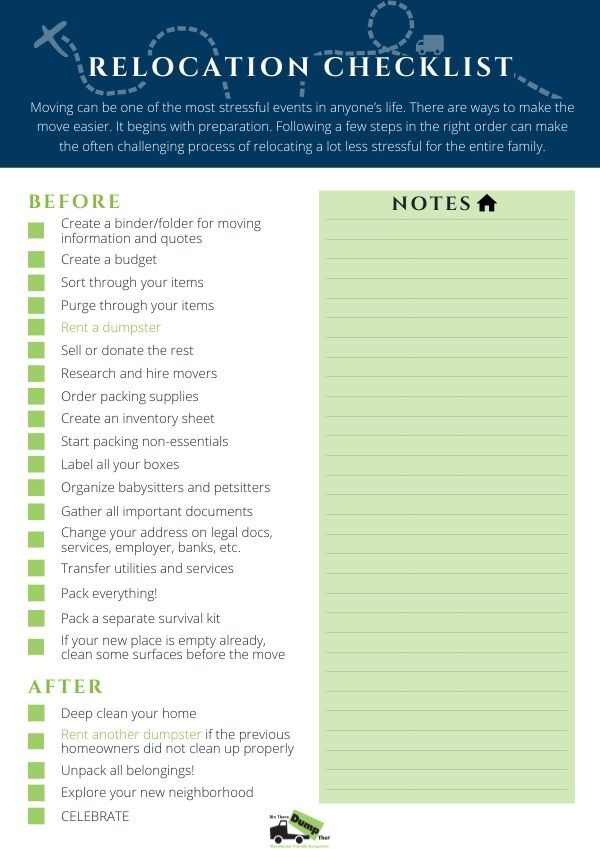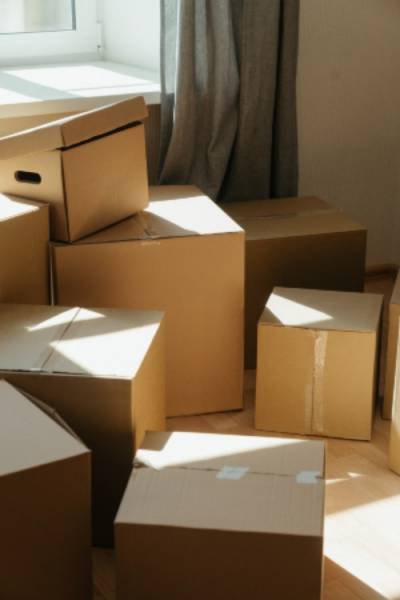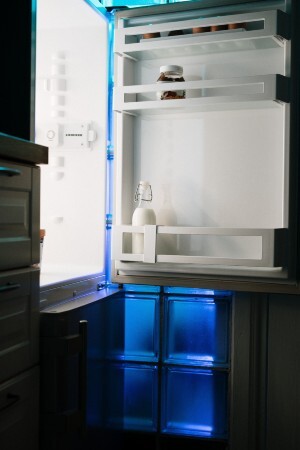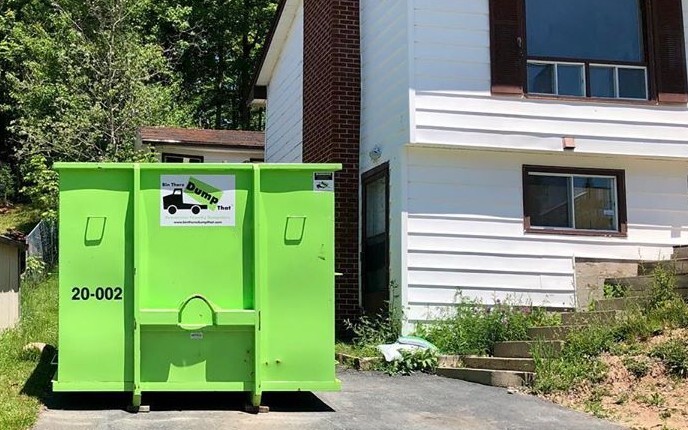You know that moving day can be one of the most stressful events in anyone's life. It's on the top tier along with planning a wedding or giving birth for the first time.
This relocation guide and free moving checklist is going to make the process that much easier!
We've created a full relocation guide and a downloadable and simple moving checklist for you to use for when you're ready to relocate or still organizing for a move.
It will cover all the elements of a relocation, including:
On top of that, the moving list will include things that you'll need to do weeks before your move, during and after your relocation. Continue reading to discover everything you need to know about moving... Or just skip to the moving planner.
Downloadable Moving Checklist PDF
Downloadable Moving Checklist PDF

While there are some variables that will fluctuate the cost of moving from year to year, there are other factors that are much more predictable. Understand how the distance, time of year and size of your household will impact your budget on moving day.
When moving, think about transportation options. Renting a car can handle family and some belongings, but for a more cost-effective choice, opt for professional movers. Consider distance for accurate cost estimation with professional movers.
Understand that the distance you're traveling is directly proportionate to the amount of money you'll spend and do your best to estimate these costs ahead of time with movers or moving truck rental companies.
With the full service of a 2 bedroom home (the moving service loads the truck and drives the truck to its destination) on October 1st 2020, here are some quotes:
As you can see closer states and in state moves are much closer than cross-country moves.
Your real estate agent probably told you that the time of the year can affect the price your home sells for. You probably didn't know that the time of the year can also impact the amount of money you'll spend on moving day. While it might seem like it would be more expensive to move in the wintertime, this is actually the most affordable time to move.
Keep this in mind when budgeting moving costs and creating a moving list, so you don't request a quote in the winter and get blindsided by a higher quote when you're ready to relocate in July.
The more people you're moving (or the more items you own), the more expensive it will be to move. While this certainly includes moving furniture, belongings, people, and even pets, it also applies to vehicles and larger belongings, like boats.
In some cases, especially when moving long distances, it may be more profitable to sell heavy furniture, items you no longer want, or those that don't fit your home's new layout. This will put extra money in your pocket for buying new furnishings, if needed, and decrease your moving costs. Make note of items you want to sell on your moving list.
Deciding whether you need professional help with your move is an important budgeting decision you should make early in the process. A moving company can be a big help during a stressful time. While it can be difficult to figure out which route is more affordable for you, there are several questions you can ask yourself to help make the decision.
Here are some moving companies that can help you:

While there's no getting around spending money on a new move, there are many ways you can move affordably and save money during the process.
Try using items around your house to pack smartly and save money.
If you’ve been considering downsizing, don’t wait until after you move to see what furniture fits. Instead, save on moving costs by selling anything you’re unsure you want to bring with you. Have a garage sale, list items on Craigslist or Facebook Marketplace, or throw out anything that’s no longer usable.
Read on for more tricks on cleaning and organizing your home before a relocation journey.
If you're renting, always have a reserve fund set up! You should have at least 3 months worth of rental income put away in an account to help absorb major expenses that will inevitably happen! Having a reserve will make your life much less stressful. It's never a good idea to rely on January pay to pay your January rent.
A couple months before the big MOVING day, begin the process of deciding what will be making the move. Moving a home is not a sale at a closeout store. In fact, it's really the opposite. Everything does not have to go (with you).
This is the point in the relocation process where you will want to incorporate a moving checklist. The more you can get rid of, the less you'll have to pack and the easier it will be to unpack on the other end. Take time to go through each room, and get rid of the things that haven't been used in a while. Anything that doesn't make the cut should get the boot long before you get to your new place - and preferably placed into a Bin There Dump That roll-off dumpster rental.
The devil is all in the details, and with a move of any kind has a seeming endless stream of details. You only have one opportunity to keep things organized and we know this is an immense amount of pressure on you. So you'll need to find a method that works for you - a spreadsheet, a whiteboard, a series of Post-It notes anything to keep track of all the details. You'll need to know all the dates, materials and important contacts. Creating a moving list helps.
It's time to start weeding down the materials. Yes, you've already gone through the house once and cleared out the obvious junk - but now it's time for a closer look. Walk through once again and ask yourself if you really need the item. If you haven't touched it in the last couple of months, it might be better for it to be in a dumpster.
If you have trouble cleaning, you might want to try this free clutter training by Diana Rene that will help you outclean your clutter.
No matter how far you're moving, the more you have to take with you, the more expensive and time consuming it will be.
Anyone who has ever had an airline lose a bag knows to put the most vital items in your carry-on luggage. With a move, the same rules apply. Any medicines, important papers, heirlooms, jewelry and anything irreplaceable shouldn't be left to the moving company. No matter how reputable the company is, mistakes happen. Accidents happen.
The key to packing is labeling. The goal is to make the unpacking as simple as possible. As you go from room to room, make sure each box indicates the room in which its contents will eventually reside. This is a good time to make final decisions on all those things you debated getting rid of but decided to wait on. If it's not vital or valuable, get rid of it.
If you're looking for an all around service that will help with decluttering, organizing, moving services and more, visit Janes Addiction. They will give you tips and tricks and, if needed, provide the service themselves.
Make sure you've collected and set aside enough moving boxes for all of your belongings. Labeling them is vital.
I know this sounds crazy, but I live to use clothes as packing for dishes, plates, and delicate items. So you’re packing your kitchen, right? Well, stuff those cups with some socks, wrap them with sweaters, shirts, etc. You have to make sure your box is small or medium sized so it’s not too heavy for the end result). I usually try to pick items I know I will need or want... So THEN, when you arrive at your new house and unpack your kitchen essentials, you ALSO have some clothing essentials. I feel like this works best for a local move, but if you strategize, you could make this work for a long distance move too.
There are a number of variables that lead you to figuring out whether this is a move you can make on your own or if you should hire professionals to help you out. It might be helpful to have a MOVING FOLDER or MOVING PLANNER that will include a simple moving checklist and information to keep track of the various stages of your move.
If you do choose to hire professionals, then you should know what you're getting from your moving company.
A couple of weeks before your move, order or find your supplies. You'll need the basics:

To save on boxes, check local grocery stores after delivery day, but remember that used boxes may lack structural integrity. Invest in quality packing materials when hiring a moving company to safeguard your valuables during the move.
When exploring your new surroundings, conduct thorough research. Seek guidance from an HR professional if you're relocating for work, and gather multiple opinions to make informed decisions about dining, shopping, healthcare, and more.
In addition to researching your new neighborhood, discover efficient packing and organizing tips. Optimize space utilization like a game of Tetris, potentially reducing the need for excessive boxes and saving on supplies when working with a moving company.
Consider using a portable storage container if your new home isn't ready yet or your temporary place lacks sufficient space. Avoid the hassle of multiple moves by securely storing non-essential items until their final destination is prepared with the assistance of a moving company.
Here are some portable storage services that you could try:
Yes, we recommend both a dumpster and a storage pod. When you move, you'll have stacks of items you'll want to bring with you, hence the storage pod. At the same time, you'll also have plenty of things you want to throw out, hence the dumpster rental. Here are two reasons why you should use both together:
Relocating and moving is exciting and can be stressful so make sure to break up your tasks into smaller doable lists and tackle it one day at a time. Reach out to experts in the field and follow them for tips, motivation and advice to ensure a successful move.
The world has evolved so much and now when you do have to do something, people will download smartphone applications to help them better stay organized. Here are five apps that can act as your moving planner:

Moving can be a challenge, but it will go a lot easier if you’re prepared for everything to come. It just makes sense to have a plan. With that in mind, here are 5 things you must do before your move.
Your moving company may supply boxes, but don’t sweat it if they don’t. There are lots of places to find boxes for your move such as local stores, your friends and even your current workplace. Most people will be more than happy to let you take old boxes off their hands.
While moving insurance may not be required, it’s a good idea to speak with your insurance company. It will protect you from damages that may happen along the way. If your belongings have a long trip before they arrive at your new home it’s even more important. It’s best to put your mind at ease and make sure you have insurance in place.
Develop a filing system for all important documents and records and pack them securely. It’s best to save room in your own car for these items so you know where they are at all times. You should include birth certificates, passports and ownerships in this box.
Moving to a new neighborhood or community will come with a whole host of challenges. By learning about your new community ahead of time you’ll be able to make an easier transition. It will also make your new house feel like a home from the moment you arrive.
Don’t forget to make sure all of your old services have been scheduled to be shut off or transferred to the new owners well in advance. You’ll also want to make sure all of your services are ready to go in your new home the day you move in. This will include basic utilities as well as modern essentials such as internet and TV subscription services.
Moving already is a huge job and we know it. As you can see there is so much more than just moving your belongings from one place to another. On top of moving, you'll have to make sure that the previous tenants of your new home clean and sanitize so that you're ready to move in... But are you sure they did a good job?
Not everyone takes the time and care to clean a place up the way they are supposed to. This is why it is crucial for you to add a deep clean to your moving list. The benefits to cleaning yourself before moving in are that it will be clean, sanitary, and free of any contaminants that the previous tenants may have left behind.

When you clean, we suggest starting with your refrigerator so that you're able to put away your perishables. Here are some steps to follow:
Once you have tackled the fridge, it is time to work on the rest of the kitchen. It is always best to start up high and work your way down.
Wipe out all cabinets and drawers with a sanitizing cleaner of your choice. Pay special attention to handles that could have lots of germs and bacteria on them.
While all areas of the kitchen should be cleaned and sanitized, you should spend extra time on the counters. This is where you will be putting your food, plates, and utensils while cooking. It should be extra clean and free of dirt, grime, dust and bacteria.
The next important room is the room that everybody hates cleaning, the bathroom. A lot of things happen in bathrooms that make it necessary to clean. Mold and mildew can easily grow in a shower/bathtub when not cleaned properly. At least touch upon these points when cleaning your bathroom:
Now it's time to clean the rest of the space. The kitchens and bathrooms are the hardest to clean and the most important areas to ensure are sanitized. Once those are tackled, you can dust, vacuum and mop the rest of the home before moving your stuff inside. Don't forget to give a good shining to the inside of windows and a good dusting of any ceiling fans that you might have.
To keep your family safe, a good cleaning is essential to complete before you bring your stuff into your new home. You will be glad you did and feel great about starting with a clean slate.
There are a few things that you'll need during your relocation and these are things that you'll have to book and organize before the move. These are extra services that you may need other than the moving company or service. Here are some other necessities that you may need if it applies to you:

Not sure what you want for your new humble abode? We can make it easy and simple, and what was it? Well, what would you expect from America's leading dumpster rental company, a dumpster rental, of course. We have 5 reasons why you would need a dumpster rental for your new home and would be a great housewarming gift from friends and family.
We advise you to pack up and move what is really, really necessary. Lugging heavy boxes around can be a big pain. Sometimes, even though you packed all that was "necessary", you may be faced with more stuff than you can fit in your new home.
All other housewarming gifts will pale in comparison to a dumpster rental, as it can lead you to a clean, happy, minimalist home.
When your new home is pretty old, you'll probably need to work on it before it can fully be your own home. Whether it be remodeling the kitchen, the bathroom, a room here and there or the house is a complete fixer upper, a dumpster will make all of it so much easier!
A great example of a complete fixer upper is from Saw Dust Girl's Maryville House. See all that you could accomplish with your fixer upper in a few years.
The carpets could be hideous and your first order of business could be to get rid of them! Old carpet is heavy and you'll definitely need a bin with tall full length double doors so you don't have to wrestle it up over the sides.
The basement needs a little more love than the rest of the house. You could have plans to make it into any room you'd like but you'd definitely need a way to get rid of any waste and debris - a dumpster rental is your solution.
Another great example of a before and after of a lower level is from The Inspired Room - the journey from the beginning to end is so different and definitely something that's doable in a larger basement.
Maybe it was just a bush out front that you wanted to pull - or maybe you wanted to remove a few walls. No matter what you want to trash, our dumpster rentals can hold items like shingles, topsoil, leaves, gravel, concrete, landscaping materials, etc.
You've just moved into your new house with a ton of boxes and packing material to go around. You'll be accumulating and drowning in boxes by the time you're done unpacking. On top of that, you'll have some packaging from housewarming gifts!
Rent a dumpster to put all the extra cardboard and organize your new home while you're at it! Maximize bin space by breaking the boxes down before throwing them in.
Some realtors offer a dumpster rental as part of the deal when a client buys a home. That can be a huge selling point, especially if the house is going to need some work to be done before move-in day. Realtors also rent dumpsters to get homes ready to stage, if it's good for the realtors, it's good for you too!
You can't wait to move into your home and the first thing you see is unwanted junk by the previous homeowners. Obviously, this junk was not expected and not wanted, so a dumpster rental is the way to go.
A nice empty dumpster rental waiting to be filled by the junk that's occupying the house!

You can find plenty of moving checklists for first-timers online, but our moving list will offer a step-by-step set of instructions to add structure to your moving plan. The best way to coordinate a big move is to develop a detailed timeline that documents each phase of tasks you'll need to complete week by week. Trust our ultimate relocation checklist to help you account for every detail you'll need to address before departing for your new home.
While you may be used to winging it and still coming out on top, if you have kids, pets, or a lifetime's worth of information to update, you should take your time to ensure that not a single detail is overlooked. For your first big move as a homeowner, it's recommended that you follow an eight-week (two-month) timeline to keep you organized and calm leading up to and beyond the big day. Though everyone's timeline may vary slightly, here are some highlights to keep in mind to prepare for your move:
Before you even think about beginning the first leg of packing, you should first categorize the items you want to get out of the way immediately and take inventory to the best of your ability. By sorting items by room, functionality, or other categories, you'll have a system that helps prevent anything from slipping through the cracks.
Here's a list of times that are typically safe to pack immediately if you have eight weeks or more to prepare:

Certain items should be kept close in case of an emergency. There's nothing more agonizing than realizing something you desperately need is packed away in a mystery box among a sea of other boxes, which is why you should keep an unsealed box of essentials nearby on the day of the move. Keep a clean change of clothes, deodorant and other toiletries, scissors, phone chargers, and a first aid kit in this box to keep you prepared for any unforeseen circumstances that have their way of unfolding at the worst possible moments.
So much needs to be done when you're managing a move, and it's tempting to cut corners in an attempt to save you a few headaches. Here's a list of mistakes to avoid that can lead to major consequences that could throw off your moving timeline:
The moment you've been waiting for, or the moment you've skipped to. The free moving checklist that you can use for your own relocation. We've created this in depth downloadable moving planner with space for notes that you may need to jot down during your move!
Feel free to download the moving checklist to help you organize your move!